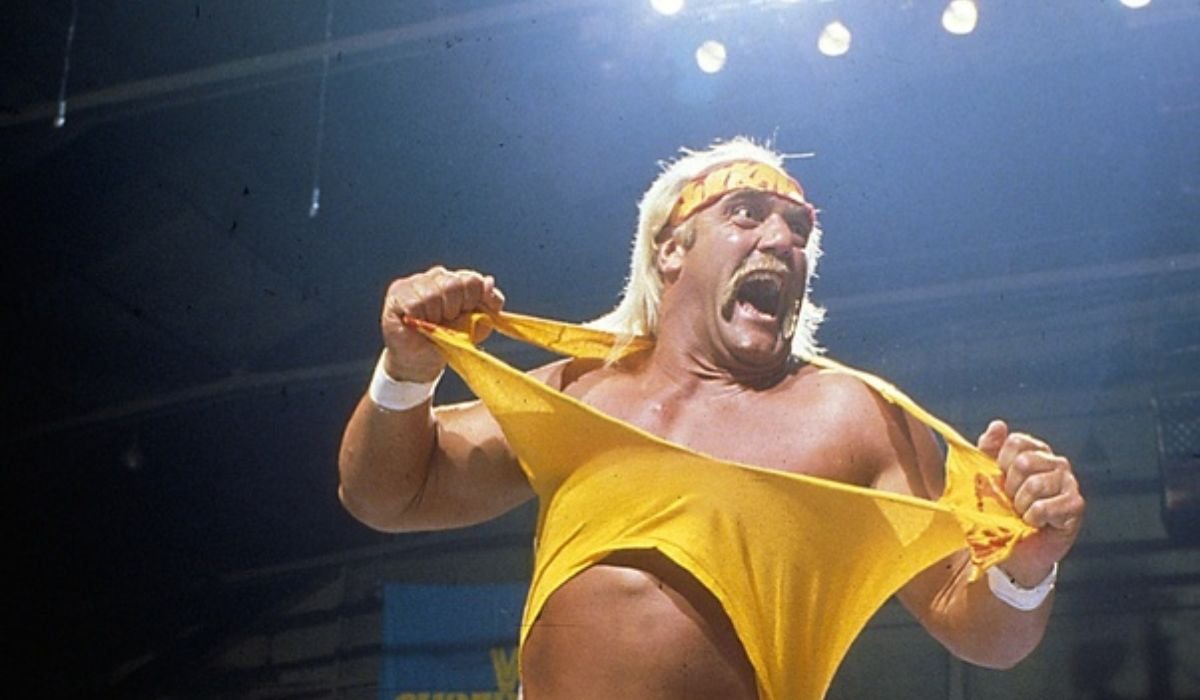Introduction
The “Hogan Dibiase Atomic Drop” is one of the most recognizable moves in professional wrestling history, and it helped to define a certain period. Hulk Hogan and Ted Dibiase, two legendary wrestlers, made this technique famous, and it had a lasting impression on both spectators and sportsmen. However, what is the Hogan Dibiase Atomic Drop exactly? What effect did it have on everyone’s careers, particularly Hogan’s? And what does it impart to us on the advantages and disadvantages of professional wrestling? Let’s examine this timeless technique in detail, consider its importance, and discover why wrestling fans still talk about it today.
Brief Overview of the Hogan Dibiase Atomic Drop
The Hogan Dibiase Atomic Drop is a wrestling move that became widely recognized in the 1980s and early 1990s, thanks to the heated rivalry between Hulk Hogan and “The Million Dollar Man” Ted Dibiase. The move involves lifting an opponent and dropping them tailbone-first onto the attacker’s knee, causing a sharp pain that is meant to incapacitate momentarily. Known for its dramatic effect and the audience’s reaction, It was more than just a move—it became a storytelling tool in the wrestling ring.
Hulk Hogan’s Reflections on the Move
Hulk Hogan, often considered one of the most charismatic wrestlers of all time, has frequently reflected on the moves that defined his career. The Hogan Dibiase Atomic Drop, while not his finishing move, was a staple in many of his matches. Hogan has noted in various interviews that the move was effective for its time, adding a layer of realism to his bouts with Dibiase and other opponents. He viewed it as a way to connect with the audience, showcasing both the pain and determination involved in wrestling.
The Move’s Impact on Hogan’s Career (Back Injuries)
While the Hogan Dibiase Atomic Drop may have thrilled audiences, it also came at a cost—particularly to Hogan himself. Over the years, Hulk Hogan suffered numerous back injuries, some of which were exacerbated by repeated use of high-impact moves like the Atomic Drop. As Hogan aged, these injuries took a toll on his overall performance and led to several surgeries. The move, while iconic, became a symbol of the physical risks inherent in professional wrestling.
The Question of Safer Moves in Professional Wrestling
The discussion surrounding the Hogan Dibiase Atomic Drop inevitably leads to broader questions about the safety of wrestling moves. With Hogan’s injuries in mind, fans and professionals alike have debated whether moves like the Atomic Drop are worth the risk. Wrestling, by nature, involves a certain level of danger, but the question remains—could safer moves achieve the same dramatic effect without compromising a wrestler’s health?
The Hogan Dibiase Atomic Drop: A Breakdown
Step-by-Step Explanation of the Move
It is performed as follows:
- Setup: The wrestler grabs their opponent around the waist, lifting them off the ground.
- Execution: The attacker spins slightly, aligning the opponent’s lower back with their knee.
- Impact: The opponent is dropped tailbone-first onto the attacker’s knee, simulating a jarring impact.
- Aftermath: The opponent reacts with pain, selling the move to emphasize its effectiveness.
The Psychology Behind the Move
The psychology of the Hogan Dibiase Atomic Drop is all about surprise and pain. In wrestling, a move’s effectiveness is not just in the execution but in how it is perceived by the audience. The Atomic Drop plays on the human body’s natural reactions to pain, using it to build suspense and drama in a match. The unexpected nature of the drop keeps the audience engaged, adding an element of unpredictability.
The Impact on the Audience
The Hogan Dibiase Atomic Drop was known for its crowd-pleasing factor. The move would often be executed at a pivotal moment in the match, generating a roar from the crowd. For fans, the move was a hallmark of the intense rivalry between Hogan and Dibiase, symbolizing the clash between good and evil, hero and villain.
The Legacy of the Move
The Hogan Dibiase Atomic Drop’s Place in Wrestling History
The Atomic Drop remains a memorable part of wrestling history, often recalled by fans who grew up watching the Hogan-Dibiase era. It symbolizes a time when wrestling moves were as much about the story being told in the ring as they were about athletic prowess.
Famous Matches Featuring the Move
Several notable matches features:
- WrestleMania IV: A crucial match in the ongoing feud between Hogan and Dibiase.
- SummerSlam 1988: Where the move played a key role in building up the narrative between these two icons.
- Royal Rumble Appearances: Used to eliminate multiple opponents and create dramatic moments.
Its Influence on Other Wrestlers
The Hogan Dibiase Atomic Drop inspired many wrestlers to incorporate similar moves into their repertoire. Wrestlers like Bret Hart and Triple H adapted variations of the Atomic Drop to suit their styles, proving its lasting influence on the sport.
The Controversy: Was it Worth the Risk?
Hogan’s Injuries and Their Impact on His Career
Hulk Hogan’s back issues are well-documented, with the Atomic Drop often cited as a contributing factor. The move’s high impact on the lower back area meant that repeated use led to chronic pain and injuries that affected Hogan’s performance and longevity in the ring.
The Debate on Safer Moves in Professional Wrestling
As wrestling evolves, so does the conversation about the safety of the athletes. The debate centers around whether moves like the Hogan Dibiase Atomic Drop are too risky and if the industry should focus on safer alternatives to prolong careers and reduce injuries.
The Potential Long-Term Health Consequences for Wrestlers
Repeated use of high-impact moves like the Atomic Drop can lead to severe long-term health consequences, such as spinal injuries, chronic pain, and the need for multiple surgeries. This realization has led many wrestlers to reconsider their move sets and prioritize safety.
Alternatives to the Hogan Dibiase Atomic Drop
Safer Finishing Moves That Can Achieve a Similar Effect
There are numerous finishing moves that can deliver a similar dramatic effect without the high risk associated with the Atomic Drop. Moves like the DDT, Superkick, or Boston Crab provide excitement while being safer options.
Examples of Wrestlers Who Have Successfully Used Alternative Moves
Wrestlers like Shawn Michaels with his Sweet Chin Music and Chris Jericho with the Walls of Jericho have proven that it is possible to achieve a compelling performance without relying on overly dangerous moves.
Conclusion
The Hogan Dibiase Atomic Drop remains an iconic move that represents both the glory and the risk of professional wrestling. While it contributed significantly to the careers of Hulk Hogan and Ted Dibiase, it also sparked a necessary conversation about safety in the sport. Wrestling will always involve an element of danger, but finding a balance between excitement and safety is crucial for the future of the industry. Whether you view the Atomic Drop as a legendary move or a cautionary tale, its place in wrestling history is undeniable.
FAQs
- What is the Hogan Dibiase Atomic Drop?
The Hogan Dibiase Atomic Drop is a wrestling move where an opponent is lifted and dropped tailbone-first onto the attacker’s knee. - Did the Hogan Dibiase Atomic Drop cause injuries to Hulk Hogan?
Yes, repeated use of this move contributed to Hulk Hogan’s chronic back issues and led to several surgeries. - Why is the Atomic Drop considered dangerous?
The move is high-impact and targets the lower back and tailbone, leading to potential spinal injuries. - Are there safer alternatives to the Atomic Drop in wrestling?
Yes, moves like the DDT, Superkick, and Boston Crab are considered safer yet effective alternatives. - Which wrestlers were influenced by the Hogan Dibiase Atomic Drop?
Wrestlers like Bret Hart and Triple H adapted variations of the move into their wrestling styles.







